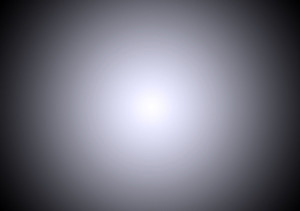'Star Wars' Warp Speed Would Look Pretty Boring, Physics Students Say [PHOTO]

Warp speed is a staple of science fiction, and the image of a ship traveling faster than the speed of light as stars whiz by can be found in “Star Trek” and “Star Wars.” Despite the impressive imagery usually attached to warp speed, several physics students have shown that the actual image of warp speed -- if it were possible -- would be pretty boring.
Several students finishing up their master's at the University of Leicester in England have published a paper discussing what warp speed would actually look like. The students are a part of the Department of Physics and Astronomy and their work was published in the Journal of Physics Special Topics.
When thinking about warp speed, the Millennium Falcon from “Star Wars” instantly comes to mind and frames your perception of what traveling faster than the speed of light would look like. The light of stars getting stretched and soon zooming past the ship as it enters warp speed is cinematic and dazzling, effectively conveying the incredibly fast speeds that the spacecraft is supposed to be traveling.
While the portrayal of warp speed may be exciting, is it in any way accurate? That’s the question the students answered, disappointingly.
Instead of lights zooming past a spacecraft as it hits warp speed, picture a central beam of light that is projected towards you. That’s what warp speed would look like, according to the student’s research. The Doppler Effect is the reason why warp speed would not be as pretty as previously imagined. According to the students, since the stars are traveling toward the spacecraft, the wavelengths of visible light will shorten. This phenomenon is called the Doppler blue shift (objects moving away turn red).
Eventually the wavelengths shorten to the point that they move from the visible light spectrum of electromagnetic radiation into the X-ray range. According to Riley Connors, one of the students working on the project, “If the Millennium Falcon existed and really could travel that fast, sunglasses would certainly be advisable. On top of this, the ship would need something to protect the crew from harmful X-ray radiation.”
Warp speed is a fun thing to discuss and the aim of the students’ research was to get them started into the world of actual physics research. The Journal of Physics Special Topics is published by the University of Leicester and is meant to let the young researchers explore topics they are interested in and to use their creativity.
According to Dr. Mervyn Roy, a lecturer from the Department of Physics and Astronomy who oversaw the project, “Our fourth years are nothing if not creative! But, to be a research physicist -- in industry or academia -- you need to show some imagination, to think outside the box, and this is certainly something that the module allows our students to practice. Most of our master's students hope to go on to careers in research where a lot of their time will be taken up with scientific publishing - writing and submitting papers, and writing and responding to referee reports.”
© Copyright IBTimes 2024. All rights reserved.






















